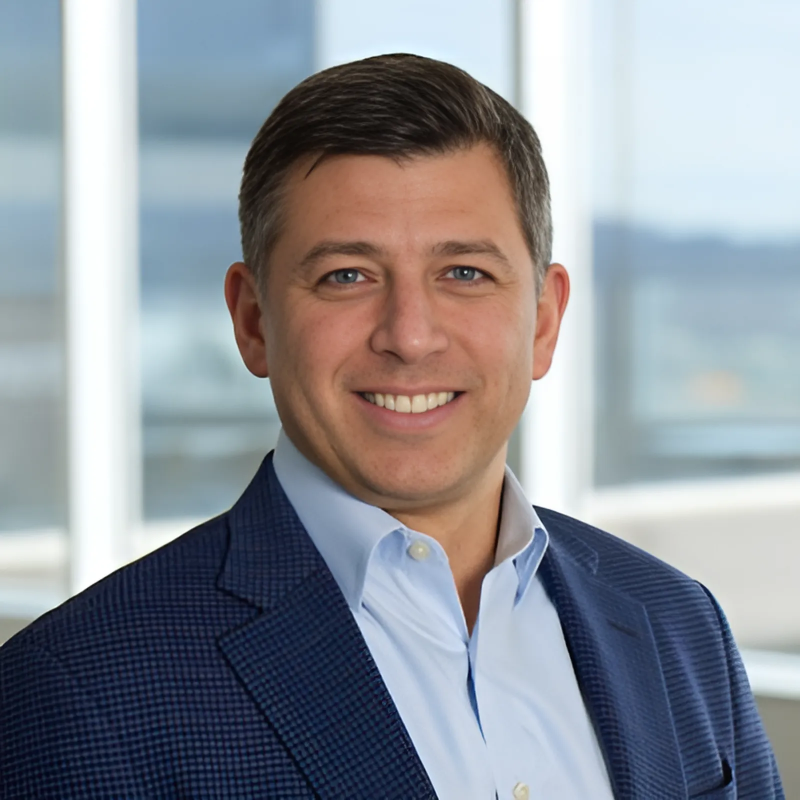By Stuart Long, CEO of InfoBionic
It became clear in March of 2020 that because of the Covid-19 pandemic, hospitals were at tremendous risk of becoming overwhelmed with sick patients. Bed capacity became a primary concern as more people needed extended hospitalization that required intensive care.
In response, the Centers for Medicare and Medicaid Services (CMS) altered a number of federal regulations governing healthcare organizations. The new set of rules, known collectively as the Hospitals without Walls program(1), was designed to help healthcare organizations continue to deliver high-quality patient care outside of the hospital itself.
Efforts to combat the pandemic routinely included remote patient monitoring (RPM) and telehealth technologies. In November, CMS introduced its Acute Hospital Care At Home program, which expanded on the initial efforts of Hospitals Without Walls by supporting various models of at-home hospital care.(2)
Expanded services
In the wake of this regulatory expansion, healthcare organizations began offering additional services inside the patient’s home. Acute Hospital Care at Home, now generally known as the Hospital in the Home, began to offer treatment for more than 60 medical conditions identified by CMS as capable of being treated safely and effectively at home; among them were asthma, congestive heart failure, pneumonia, and chronic obstructive pulmonary disease (COPD).(2)
After an initial face-to face-evaluation by a physician, qualifying patients were allowed to receive care remotely. Registered nurses could evaluate each patient at least once a day, using remotely gathered information to help make treatment decisions.
What began as an emergency measure has since become mainstream, as more and more healthcare providers adopt telehealth and remote monitoring as essential components of patient care. It has been estimated that as many as 30 million Americans will use some type of remote patient monitoring tool by 2024.(3)
Application to cardiology
Remote monitoring technologies and telehealth have been adopted in some medical subspecialties more than others. Cardiologists, for example, were some of the earliest to use these technologies to keep tabs on patients outside hospital walls,(3) and are still among the heaviest users of the capability.
One reason for this is simple need. Chronic diseases like heart disease are the leading causes of death and disability in the United States, costing the country an estimated $3.8 trillion in annual healthcare costs.(4) According to the American Heart Association, it costs 3.5 times more to treat a chronic condition compared to other medical concerns.
Today, implantable devices, biosensors, blood pressure cuffs, and pulse oximeters are all part of RPM technology regularly used by cardiologists to check in on patients located outside the hospital setting.
Many are small and unobtrusive enough to be worn by patients all day, every day. They automatically measure and transmit data at a distance, usually using wireless technology. Providers access the patient’s complete medical record, making treatment recommendations as the patient’s condition changes in real time.
Better care?
RPM devices, in short, allow physicians to capture a holistic view of a patient’s health over time, increase their understanding of the patient’s compliance with treatment recommendations, and enable timely interventions before costly care episodes.
The American Heart Association, for example, estimates that more than 42% of all American adults will be diagnosed with hypertension by 2035, an increase of 27 million people. Initial research shows that RPM reduces both systolic and diastolic blood pressure significantly compared to typical medical care and self-monitoring alone. Other research suggests that RPM’s positive impact on systolic blood pressure increases with long-term use and multiple behavior change techniques.(5)
Remote monitoring also provides potential benefits for the estimated 2.7 to 6.1 million people in the United States who live with atrial fibrillation (AFib), a dangerous and potentially deadly type of cardiac arrythmia. AFib is associated with increased risk for other adverse events, such as heart failure, stroke, increased number of hospitalizations, and death. Early indications show that RPM may help improve outcomes for many through early detection and treatment of AFib, in turn decreasing all-cause mortality rates and hospitalizations.(5)
The Future of Remote Patient Monitoring
It’s likely that the future of healthcare itself will be a hybrid model of care combining virtual, noninvasive monitoring with physician consultations and traditional physical examinations. According to McKinsey & Company, consumer use of telehealth services — including remote patient monitoring — has risen from 11% in 2019 to 46% today.
The global remote patient monitoring market is projected to reach $175.2 Billion by 2027 from $53.6 Billion in 2022, at a CAGR of 26.7% during the forecast period.(6) And cardiology, according to the projection, isn’t the only subspecialty where remote patient monitoring can improve outcomes. Monitoring services may eventually include conditions like diabetes and obesity. There is even some speculation that RPM could be used to help diagnose and manage problems like obstructive sleep apnea.
All this is possible because of evolving technology. Patients already use smartphone apps to share information from remote monitoring devices directly to their providers. Sophisticated cloud-sharing platforms are also proving essential to the success of this hybrid model of healthcare, as many allow the integration of numerous types of RPM devices for the same patient. These same platforms also allow healthcare providers to easily view and manage patient data.
Now, many providers are leveraging mobile-enabled remote patient monitoring, which may be more cost effective and efficient compared to other monitoring technologies. These devices use notifications that prompt users to enter data, providing almost instant clinical and financial value to large and small practices alike.(7)
Possibilities on the horizon
Current generations of remote patient monitoring technology cannot monitor all vitals—oxygen level, ECG, blood pressure, blood glucose, etc.—at the same time and/or in the same device. However, biotech companies are working to develop a kind of “tricorder” technology, similar to that seen in “Star Trek”. It is anticipated that this kind of innovative technology will become more precise, more accepted, and simply a reality—hopefully, in the not-too-distant future.
Healthcare delivery in the virtual world is on the rise, and it will only continue to expand as more patients and providers turn to remote monitoring or telehealth options. These essential augmentations to the existing healthcare landscape are already helping doctors manage a variety of chronic health conditions, like heart disease. And these technologies bridge the care gap that many experience because of socioeconomic, geographical, or environmental difficulties.
The Hospital in the Home model of healthcare gives patients more freedom of choice and autonomy over their own health and treatment decisions. Remote monitoring technologies also help keep patients safe, even if they aren’t at risk for COVID-19. These technologies represent a fundamental change in how people access healthcare, analyze health data, and make decisions that improve patient outcomes. It truly is a win-win situation for everyone.
About Stuart Long
Stuart Long was appointed CEO of InfoBionic in March 2017. With more than 20 years of experience in the medical device market, Mr. Long brings a great deal of expertise in achieving rapid commercial growth. Prior to joining InfoBionic, he was CEO at Monarch Medical Systems, LLC, a Charlotte-based, artificial intelligence clinical decision support software provider for insulin dosing calculations, where he oversaw the organizational restructuring of the company.
Sources:
- “Fact Sheet Additional Background:Sweeping Regulatory Changes to Help U.S. Healthcare System Address COVID-19 Patient Surge.” CMS, 30 Mar. 2020, cms.gov/newsroom/fact-sheets/additional-backgroundsweeping-regulatory-changes-help-us-healthcare-system-address-covid-19-patient.
- “Press Release CMS Announces Comprehensive Strategy to Enhance Hospital Capacity Amid COVID-19 Surge.” CMS, 25 Nov. 2020, cms.gov/newsroom/press-releases/cms-announces-comprehensive-strategy-enhance-hospital-capacity-amid-covid-19-surge.
- Tashnek, Daniel, JD. “How Remote Patient Monitoring Is Changing the Practice of Cardiology.” Practical Cardiology, 6 Nov. 2020, practicalcardiology.com/view/how-remote-patient-monitoring-is-changing-the-practice-of-cardiology.
- Dolan, Shelagh. “The Technology, Devices, and Benefits of Remote Patient Monitoring in the Healthcare Industry.” Business Insider, Business Insider, 10 Mar. 2021, businessinsider.com/remote-patient-monitoring-industry-explained.
- “Chronic Diseases in America.” Centers for Disease Control and Prevention, Centers for Disease Control and Prevention, 12 Jan. 2021, cdc.gov/chronicdisease/resources/infographic/chronic-diseases.htm.
- “Remote Patient Monitoring Market by Product, End user – Global Forecast to 2027”, ReportLinker, March 2022, https://www.reportlinker.com/p05982888/Remote-Patient-Monitoring-Market-by-Product-End-User-Global-Forecast-to.html?utm_source=GNW
- Dillard, Robert. “What Is the Future of Remote Patient Monitoring (RPM)?” Docwire News, 28 Feb. 2020, www.docwirenews.com/blog/what-is-the-future-of-remote-patient-monitoring-rpm/.




